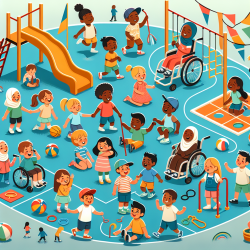Understanding Inclusive Child Care
Inclusive child care is more than just a buzzword—it's a fundamental approach to ensuring that all children, regardless of their abilities, can participate fully in child care programs. At its core, inclusion is about recognizing and valuing diversity, ensuring that every child has equitable access to resources and opportunities.
Accessibility and Equity
Accessibility is a cornerstone of inclusive child care. It means providing quality services within reasonable reach for all sections of the population, including marginalized groups such as ethnic minorities, Indigenous populations, and children with diverse abilities. Accessibility involves adapting the physical environment and activities to ensure the safety and comfort of all children.
Creating Effective Care Plans
Care plans are crucial in inclusive child care settings. Developed collaboratively by child care providers, parents, and sometimes ASCD and SCD consultants, these plans address the unique needs of children requiring support. They include diagnoses, recommended actions, and necessary resources, ensuring that children can participate meaningfully in all aspects of the program.
The Importance of Cultural Safety
Cultural safety is about transforming relationships and ensuring that the needs and voices of children and their families are central. It involves understanding power imbalances and actively challenging discrimination and racism in service delivery. Cultural competency, a key component of cultural safety, requires being aware of and respectful towards the cultural and linguistic needs of the communities served.
Benefits of Inclusive Child Care
- For Children: Promotes social skills, improves self-esteem, and fosters new friendships.
- For Families: Increases access to quality care, improves relationships with staff, and provides opportunities for advocacy.
- For Child Care Providers: Enhances problem-solving skills, builds new competencies, and strengthens community connections.
- For Communities: Enriches community relationships, promotes diversity, and supports social inclusion.
Implementing Inclusive Practices
Implementing inclusive child care involves focusing on access, participation, and support. This means ensuring that all children can engage in typical activities, adapting environments to meet diverse needs, and supporting families with a family-centered approach. Training and collaboration with community service providers are essential to building a successful inclusive environment.
Developing an Inclusion Policy
Creating an inclusion policy is a vital step in fostering an inclusive child care environment. This policy should outline guiding principles, define key terms, and establish procedures and accountability measures. Engaging all staff in the development process ensures ownership and commitment to inclusive practices.
For more information, please follow this link.










